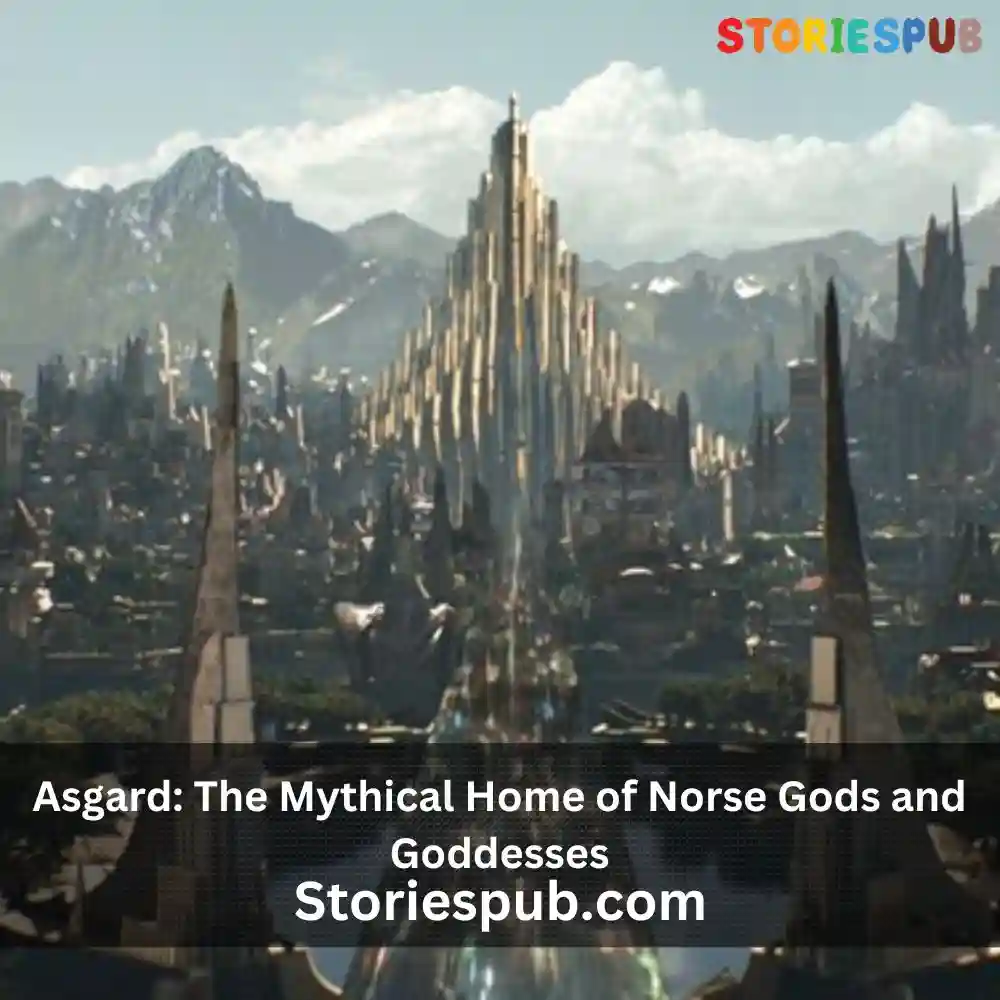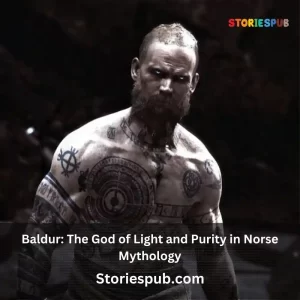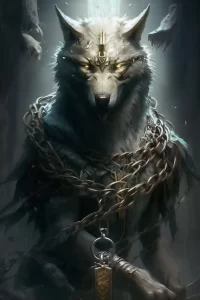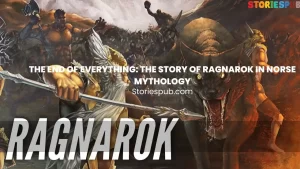Asgard: The Mythical Home of Norse Gods and Goddesses

Image credit : Pinterest
Introduction
Ancient Tales of Norse Mythology
Norse mythology is a collection of stories and beliefs that originated in Northern Europe. The myths were passed down through oral tradition and eventually recorded in written form during the medieval period. This mythology is rich with tales of gods, goddesses, heroes, and monsters that have captured the imagination of people for centuries.
One of the most important aspects of Norse mythology is Asgard, which is considered the home of the gods. It is said to be a place where magical creatures reside and where ancient beings govern over humanity.
The Importance of Asgard
Asgard has been an essential element of Norse mythology since its inception. It represents a sacred place where gods rule over humans and other realms in the universe.
The idea behind this mythological construct was to create a system that explained natural phenomena such as thunderstorms or natural disasters while also providing moral guidance for people. As such, Asgard has played a significant role in shaping our understanding of ancient Nordic culture, philosophy, religious beliefs and worldviews.
It provides an insight into their values and attitudes towards life, death, rebirth and afterlife. The importance placed on Asgard within Norse mythology can be seen through the variety found within its pantheon; each god has their own personality traits, abilities or flaws that make them distinct from one another while still connected as part of a larger whole.
Asgard: Home of Gods
Asgard is believed to be located at the centermost point among all realms defined by Yggdrasil (the world tree), although its exact location remains shrouded in mystery. Within it lies Gladsheim (Hall Of Joy) which serves as Odin’s great hall, Valhalla – home to warriors who died honorably in battle- ruled by Odin himself. The definition of Asgard as the home of gods is significant because it represents how the ancient Norse people perceived their world.
It was a place that they believed existed, and one where gods enjoyed an elevated status compared to humans. As such, it served as a reminder of the natural order and hierarchy within their society.
Furthermore, Asgard is considered to be a paradise due to its beauty and abundance. It is described as having buildings made entirely of gold and silver, with floors made of precious stones.
The city itself is surrounded by a wall that was built by a giant named Hrimthurs using magic stones. Asgard remains one of the most fascinating areas within Norse mythology.
Its importance cannot be overstated, as it forms an integral part of the belief system in ancient Norse culture. Through understanding its origins, depiction and significance we can gain insight into how this mythology has shaped our modern worldviews today.
Creation of Asgard
Description of how Asgard was created from the body parts of a giant named Ymir
According to Norse mythology, Asgard was created when Odin and his brothers Vili and Ve killed the giant Ymir. They used his body parts to form the world as they knew it, with his flesh becoming the earth, his blood forming the oceans and seas, and his bones becoming mountains.
From Ymir’s skull they fashioned a dome to enclose a realm where they could live and rule over all other beings. This dome was known as Asgard – the home of the gods.
It was a beautiful place with golden walls, shining palaces, and vast halls made for feasting and celebration. The gods themselves lived in grand halls that were arranged around a central courtyard known as Gladsheim.
The most impressive building in Asgard was Valhalla – a vast hall designed to house warriors who died in battle. This hall had 540 rooms each able to host 800 warriors for an eternity of feasting, drinking, fighting and celebration.
Introduction to the gods who inhabit Asgard
Each god or goddess in Norse mythology is unique with their own personality traits, abilities or weapons. However some are more prominent than others within Asgard – let’s meet some of them:
– Odin: The father figure in Norse mythology who rules over all other deities; he is associated with wisdom, knowledge, war-like frenzy and death. – Thor: The son of Odin is perhaps one of the most famous figures from Norse mythology; he is strong but somewhat simple-minded god associated with thunderstorms.
– Loki: A trickster god associated with mischief-making; he often causes problems for other gods while trying to solve them. – Freyja: A powerful goddess associated with fertility, love affairs and war.
– Heimdallr: A god who is known for his ability to see and hear everything that happens on earth; he guards the bridge into Asgard, known as Bifrost. These are just a few examples of the various gods and goddesses who reside in Asgard.
Each of them plays an important role in Norse mythology, and their complex relationships with one another make for fascinating tales. The gods were not perfect beings, they had their flaws but they were still revered and worshipped by people even today.
The Nine Realms
In Norse mythology, there are nine realms which are interconnected through Yggdrasil, the World Tree. These realms include Midgard, Asgard, Vanaheim, Alfheim, Nidavellir, Svartalfheim, Jotunheim, Helheim and Muspelheim. Each realm is unique and has its own distinct characteristics.
Overview of the Nine Realms
Midgard is the realm of humans and animals. It is located in the middle of Yggdrasil and surrounded by an ocean that separates it from the other realms.
Asgard is known as the home of gods and goddesses. It is a beautiful city where immortal beings reside in grand halls surrounded by walls made of pure gold.
Odin sits on a throne at the center of Asgard in his palace called Valaskjalf. Vanaheim is inhabited by Vanir who are known to be masters of magic like Freya and Freyr.
These gods symbolize wealth, fertility, nature and magic. Alfheim is inhabited by elves who are known for their beauty and gracefulness.
They live in an ethereal world full of light that shimmers like jewels. Nidavellir or Svartalfheim are lands inhabited mainly by dwarves who create magical items with their exceptional craftsmanship skills.
Jotunheim or Utgard is also known as land of giants where they live with trolls who can take human form. Giants were sometimes seen as enemies of gods but were sometimes friendly towards them too.
Helheim was ruled by Hel – Goddess/queen over death; it’s a dark underworld where souls go after death unless they have been chosen to go to Asgard or to Valhalla (Odin’s great hall). Muspelheim represents fire ruled by Surtr who guards entrance from Hel’s realm; it’s located at the southern end of the world and is known as the place of final battle between good and evil during Ragnarok.
Focus on Asgard
Asgard is regarded as the most important of all nine realms in Norse mythology. It’s a heavenly domain where gods reside, and some believe it to be heaven-like place that only heroes can go to after death.
It has been described as a magnificent city, with high walls made of pure gold that gleam in sunlight. The great hall called Valhalla is also located in Asgard, where half of those who die in battle are taken by Valkyries to live with Odin.
In Valhalla, warriors are treated to an endless feast, fights, and other entertainment until they are called upon to fight alongside their fellow soldiers at Ragnarok. In Norse mythology, Asgard is also seen as a symbol of order and stability – everything works according to rules set up by gods.
The gods have specific roles and responsibilities within Asgard which helps maintain order among themselves. For example, Odin (the head god) looks over all realms including Midgard while Thor (the god of thunder) looks after Midgard.
Understanding the nine realms in Norse mythology gives us insight into a rich cultural heritage with nine different worlds interconnected through Yggdrasil Tree. While each realm has unique attributes that make them fascinating in their own right, Asgard’s focus on the gods and goddesses makes it critical for understanding Norse mythology.
The Gods and Goddesses of Asgard
Asgard is the realm where the most powerful gods in Norse mythology reside. They are known as “Aesir.” These gods are responsible for controlling natural phenomena, such as storms, fertility, and life and death. There are numerous gods and goddesses in Asgard, but some stand out more than others.
Detailed descriptions of major gods
Odin is one of the most well-known gods in Norse mythology. He is often referred to as the All-Father because he created all life on Earth.
Odin’s main responsibility is to protect Asgard from any harm that may come its way. He also governs war, wisdom, and poetry.
Thor is another prominent god in Norse mythology who is known for his immense physical strength. He wields a magical hammer named Mjolnir that can only be lifted by those who are deemed worthy.
Thor controls thunderstorms and rain and protects humanity from giants. Loki is a complex character in Norse mythology who has a reputation for being mischievous and cunning.
He often causes trouble for the other gods but sometimes helps them out of difficult situations as well. Loki was punished for causing Baldr’s death by being chained to a rock with venomous snakes dripping venom onto him until Ragnarok.
Discussion on lesser-known gods
Heimdallr is known as the Watchman of the Gods because he can see great distances and hear sounds from miles away due to his hearing abilities surpassing that of any God or man’s ability. Heimdallr guards Bifrost bridge which leads to Asgard – making him an essential figure in protecting Asgard from threats.
Baldr serves as a representation of light, beauty, love, purity, joy – all things good – in Norse Mythology; he was also a favorite among many gods and goddesses. Baldr was loved by all except Loki, who devised a plan to kill him.
After his death, he became the ruler of Helheimr, the Norse underworld. Freyja is one of the most significant goddesses in Norse mythology.
She is known as the goddess of love, fertility, war, wealth and death. Freyja is also known for her beauty and her ability to transform herself into a bird or fly through the air with her feathered cloak – making her a formidable force.
Asgard contains an array of gods and goddesses each with their unique storylines that add depth to Norse mythology. The major gods such as Odin, Thor, and Loki are well-known figures in popular culture but lesser-known gods like Heimdallr, Baldr or Freyja are just as integral to understanding Asgard’s complex history.
Life in Asgard
Description of Daily Life in Asgard for the Gods
Asgard is a vast, sprawling city filled with awe-inspiring structures and breathtaking scenery. It is home to the gods, who live their lives without the limitations that mortals face. The gods enjoy ultimate freedom and do not need to worry about mundane tasks such as eating or sleeping.
They have access to all kinds of luxuries, including feasts and mead halls, where they indulge in food and drink with abandon. The gods also participate in various activities that reflect their personalities and interests.
For instance, Odin spends most of his time studying ancient scripts in his hall of wisdom while Freya practices magic at her palace. Thor spends his time hunting giants while Loki revels in playing pranks on other gods.
Discussion on Important Locations Within Asgard Such As Valhalla
Valhalla is one of the most important locations within Asgard; it is a vast hall where Odin takes warriors who died bravely in battle. These warriors are known as Einherjar; they spend their days preparing for Ragnarok under the watchful eye of Odin. Another important location within Asgard is Vingolf, a beautiful palace reserved for goddesses such as Freya and Idunn.
Vingolf is situated near Valhalla but can only be accessed by those who belong there. Gimli is another famous location within Asgard; it’s a golden hall located at the top-most point of Yggdrasil (the world tree).
Only the bravest heroes are invited to reside here after death; its walls gleam with gold while its roof shines like sunrays. Bifrost is another location worth mentioning; it’s a rainbow bridge that connects Midgard (Earth) to Asgard.
Bifrost’s guardians are Heimdallr, who keeps watch over the bridge and reports any potential dangers to the gods. Additionally, Asgard is home to various other palaces and halls, such as Gladsheim, where Thor resides; Breidablik, which is Baldr’s hall; and Fensalir, the house of Frigg.
All these locations reflect different aspects of Norse culture and mythology. Life in Asgard for the gods is one filled with luxury, adventure and excitement.
From grand halls to magical forests, Asgard has everything that a god could ever desire. The various locations within Asgard serve specific purposes that help shape Norse mythology into a rich tapestry of stories and legends.
The End of the World: Ragnarok
Norse mythology tells the story of an epic battle known as Ragnarok, where the gods and giants fight to the death. The word “Ragnarok” means “fate of the gods,” and it is believed to be the end of all things. The events that occur during Ragnarok are brutal and devastating, marking a turning point in Norse mythology.
Explanation of Ragnarok
According to Norse mythology, there are a series of events that lead up to Ragnarok. These include natural disasters such as earthquakes and floods, as well as political unrest among the gods.
Eventually, a great war breaks out between the Aesir (the gods) and their enemies, including Loki and his army of giants. During this final battle, many important figures in Norse mythology meet their demise.
Odin is killed by Fenrir (a giant wolf), while Thor dies fighting Jormungandr (the Midgard Serpent). Eventually, Surtur (a giant made entirely of fire) sets Asgard ablaze with his sword.
How it Affects Asgard and its Inhabitants
As you might imagine, Ragnarok has a significant impact on Asgard and its inhabitants. Many gods die during this final battle, including some of the most important figures in Norse mythology such as Odin and Thor. The fire giant Surtur sets Asgard ablaze with his sword before he himself is destroyed along with everything else.
But despite all this devastation, there is hope for a new world to emerge from the ashes of the old one. Two humans named Lif and Lifthrasir survive by hiding inside Yggdrasil – the world tree – during Ragnarok.
They will eventually emerge to repopulate Earth after everything has been destroyed. In many ways, the story of Ragnarok represents the cyclical nature of life and death.
Even the gods themselves are not immortal, and eventually they too must face their end. But in their destruction lies the potential for something new to emerge.
The Significance of Ragnarok
The story of Ragnarok is significant in many ways. The Norse believed that it was important to face death bravely and without fear, which is reflected in the bravery of the gods during their final battle. Additionally, it represents a shift from a focus on tribalism to one on individualism – as we see with Lif and Lifthrasir being the only humans saved from destruction.
Ragnarok also has many parallels with other apocalyptic myths from around the world, including those found in Christian theology. In both cases, there is a sense that something must be destroyed before it can be reborn – a theme that reflects our own experiences with loss and rejuvenation throughout our lives.
Final Thoughts
The story of Ragnarok is both tragic and hopeful at the same time. It reminds us that even in the face of destruction there is always potential for growth and renewal. Asgard may be destroyed during this final battle, but its legacy lives on through its surviving inhabitants and their descendants who repopulate Earth after all has been destroyed.
Legacy: Influence of Norse Mythology on Modern Culture Norse mythology has had a profound impact on modern culture.
From literature to art to film and television, Norse mythology has been the inspiration for countless works of art and entertainment. In literature, authors like J.R.R. Tolkien and George R.R. Martin have drawn inspiration from Norse mythology for their own works, creating intricate worlds that echo the rich history and legendary figures of Norse myth.
In popular culture, depictions of Norse gods have become commonplace in everything from comic books to video games. The Marvel Cinematic Universe has brought characters like Thor and Loki to life on the big screen, raising awareness of these iconic figures among audiences around the world.
Another area where Norse mythology has had an impact is in music. Heavy metal bands like Amon Amarth and Bathory draw heavily from Norse mythology in their lyrics, creating a dark and powerful sound that captures the essence of this ancient lore.
Discussion on How Depictions Of… Over time, depictions of Asgard and its denizens have evolved as different creators put their own spin on these classic tales.
While traditional artwork depicts Asgard as a place filled with grand halls and soaring towers, modern interpretations often emphasize the more chaotic aspects of this realm. One example can be found in Neil Gaiman’s book “Norse Mythology,” which provides readers with a fresh perspective on these ancient tales by retelling them in his own unique voice.
Another popular interpretation is seen in games like God of War or Assassin’s Creed: Valhalla which offer immersive experiences set within this richly imagined world. Despite these changes over time, one constant remains: The enduring power and appeal of Asgardian lore continues to captivate audiences around the world today.
Conclusion Asgard remains an enduring symbol for all those who seek wisdom, courage or hope – qualities embodied by its legendary inhabitants such as Odin or Thor.
From its creation as a home for the gods to its ultimate destruction in the apocalyptic event of Ragnarok, Asgard has been a source of inspiration for countless generations across a wide variety of mediums. While our understanding of this ancient mythos may continue to evolve over time, one thing is certain: The enduring legacy of Norse mythology speaks to something deep within us all, something that touches on our shared human experience and inspires us to dream big and strive for greatness.
Hey kids, how much did you like The Asgard: The Mythical Home of Norse Gods and Goddesses ? Please share your view in the comment box. Also, please share this story with your friends on social media so they can also enjoy it, and for more such Norse Mythology, , please bookmark storiespub.com.
Related Post :
Asgard FAQ
What is the significance of Asgard in Norse mythology?
Asgard represents the realm of the gods and the importance of divine power in Norse culture.
What are some other realms in Norse mythology besides Asgard?
There are several other realms in Norse mythology, including Midgard, the world of humans, and Helheim, the realm of the dead.
Is Asgard worshipped in modern times?
Asgard is not worshipped as part of any organized religion in modern times, but it is still studied and appreciated by scholars and enthusiasts of Norse mythology.
Are there any stories involving Asgard?
Asgard appears in many Norse myths, including one in which the gods must defend Asgard from the forces of the giants in a final battle known as Ragnarok.
What is the significance of Asgard's role in Norse mythology?
Asgard represents the divine power and authority in Norse culture, as well as the idea of a higher spiritual realm beyond the physical world.
Are there any symbols associated with Asgard?
Asgard is often associated with the image of a fortress or palace, as well as with the concept of divine order and hierarchy.
Is Asgard similar to other mythical realms in other mythologies?
The concept of a mythical realm inhabited by gods is found in many mythologies throughout the world, and there are some similarities between Asgard and other mythical realms, such as the Greek Mount Olympus and the Hindu Svarga.
Are there any modern adaptations of Asgard in popular culture?
Asgard has been adapted in various forms in popular culture, including in comic books, video games, and movies. It is often portrayed as a majestic and powerful kingdom with godlike beings.
What is Asgard's relationship with the other realms in Norse mythology?
Asgard is said to be connected to the other realms of Norse mythology through the world tree, Yggdrasil, and is often considered to be the most important realm because of its connection to the gods.



